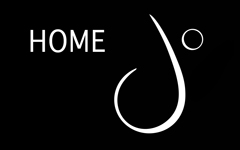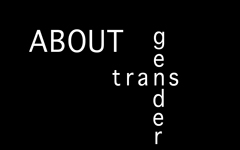Written: 2005
Royal Lyceum Company, Edinburgh
The programme note for the Lyceum production:
I never want to dramatise a book unless I love it.
And because I love it, I want to leave everything I love in.
But also, because I love it, I want to make it into the best play I possibly can.
I’m doing the book no favours if my play turns out to be stodgy or dull.
And that means cutting.
Cutting and cutting and cutting.
Especially with a book as long as this one.
Sometimes it means cutting the very things I love the most.
It’s a cruel fact I learnt very early on as a playwright: it’s hard to write good dialogue, and to write a good scene is harder still. But if they don’t fit into a workable structure even the best scene and the best dialogue are worth nothing at all. And that is so true when dramatising a book. The best novelists – and I only want to work with the best! – are those which exploit the artistic possibilities of their form to the maximum. They put things into their novels that ultimately can only be expressed through the form of the novel. And these, in turn, are always in conflict with the possibilities of theatre. How the conflict is resolved in the end comes down to a question of taste. I must warn you of this, programme reader, especially if (as I expect you do) like me you love Tolstoy. For our tastes are almost bound to differ.
What attracted me to this book, perhaps more than anything else, was its dual structure. It is a wonderful feature of War and Peace the way Tolstoy paints a vast panorama in which the characters supposedly at the mercy of historical events, Pierre, let’s say, or Natasha, still seem able to make choices while those supposedly in command of these self-same events – Napoleon and Kutuzov – are at their mercy and unable to exercise choice in a meaningful way at all. Anna Karenina inhabits an ostensibly more domestic framework (although Tolstoy also masterfully allows us to understand the wider social and historical perspective) and the problem of human choice is still clearly a major preoccupation. Not, to be honest, that that interests me so much. What fascinates me is the way the two sets of relationships – between Anna and Vronsky, between Katy and Levin – reflect each other and strengthen each other and take on such profound meanings in relation to each other. At the same time the parallel between Oblonsky’s serial unfaithfulness – which everyone apparently finds so endearing – and Anna’s one act of infidelity – which everyone finds so unforgiveable – so eloquently reveals the double standards at the heart of male dominated, misogynist, society. These parallels I felt I had to keep. And having made that decision, so many other decisions seemed somehow to make themselves. What is a little uncanny, however, is to observe how much when dramatising another writer’s work I find I have drawn on my own experience in order to do so.
My life-long partner died in the course of rehearsals for this show and so it is perhaps because my heart is so painfully full of my love for her that I see traces of it everywhere in this script. It is so clear in the strengths and the destructiveness in both sets of relationships; just as I now see it informing so much of my work as a whole. In fact I can understand now so clearly that without our love my work would probably not exist at all. Perhaps that is what a great novelist does: make the events in the novel seem to its readers like their own autobiography. Certainly weknow that Levin was in many respects a portrait of Tolstoy himself: in his shyness, his love and abiding concern for the land. There was a time in my life when I lived on a commune, and we tried to be self-sufficient: that, too, has found its way into my script. As a transgendered person, I have always felt myself on the very fringes of society, and like Anna at risk, if I followed my desires, of being utterly ostracised.
In more important ways I think we can all relate to the characters in the novel. It is easy to reflect on the evens of the Russian Revolution and see, in hindsight, how the class Tolstoy portrays was doomed to extinction. Less easy, perhaps, to see how strongly that reflects our own selves. Like them we live in a set of social and economic structures patently founded on the most grotesque injustice. The gulf between Levin and one of his peasants is one not even so great as between an inhabitant of a Mumbai slum and ourselves: and this disparity is as equally unsustainable. Rapid technological change, whether in the shape of the internet or the railways, renders both our societies inadequate to cope with the realities of the changing world that confronts them. And Levin’s class, like ourselves, was progressively cut off from the natural world that sustains us in ways that damage us more than we can comprehend or perhaps imagine. It seems no coincidence to me that at the centre of all these injustices in the book lies the inequality between men and women. The book, of course, is not a tract of any kind, and should not be reduced to any special message or theme. A good book, like a good play, in the end uses the resources of its medium to reflect on life as it is lived and in the process give pleasure. But you will I hope forgive me if I leave the last word on this to my late partner. It sums up neither the book nor the play; but it does, I hope, give us a context in which to reflect on both:
“I was the first person in my family to go into higher education; I had left university with a sense that I could do things which only a few years before I had never dreamt I could; as a young woman with a lot to contribute. I thought about how many doors had been shut in my face since (though some I’ve also prised open again), shut sometimes without explanation, sometimes with apologies, and what that had meant for my sense of myself and my possibilities. I thought about my own generation, at a turning point, energised by a new vision but caught up and tangled in old doubts sometimes, looking forward but sometimes looking back. I thought about my mother whose life has been led within narrow parameters and who was brought up in a firm belief in women’s place, and my daughters, to whom that makes no sense at all. They are beginning their lives as women in a world which tells them they are equal even as it withholds equality, a world which holds more possibilities for them than women have ever known, but reason to fear as well.
A serious and visionary attempt to address inequality, between men and women, between women and men, would power the renewal of our society which is so badly needed. Workable, everyday equality would revitalise the institutions of this country and end oppression within families. Equality is the missing ingredient in the puzzle of why so much social legislation doesn’t work. There has been half a social revolution: we need now to complete it.”
[From: Making It Work by Sue Innes (Chatto and Windus, 1995) p 336]





